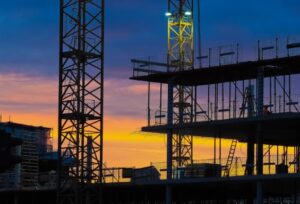
 Whether you’re embarking on a new construction project or simply curious about the intricacies of solid construction, this comprehensive guide is designed to provide you with everything you need to know. From the fundamental principles to the latest techniques and materials, we will delve into the world of solid construction, equipping you with the knowledge and insights to make informed decisions. So, let’s dive in and explore the fascinating realm of solid construction together!
Whether you’re embarking on a new construction project or simply curious about the intricacies of solid construction, this comprehensive guide is designed to provide you with everything you need to know. From the fundamental principles to the latest techniques and materials, we will delve into the world of solid construction, equipping you with the knowledge and insights to make informed decisions. So, let’s dive in and explore the fascinating realm of solid construction together!
What is solid construction and why is it important?
When it comes to building or renovating a home, one term that you may often hear is “solid construction.” But what exactly does it mean? And why is it important? In this section, we will delve into the basics of solid construction, explore its benefits, debunk common misconceptions, and provide tips for incorporating it into your own projects.
To understand solid construction, it is crucial to first grasp the materials and techniques used. Solid construction refers to the use of sturdy, durable materials such as concrete, brick, stone, or timber. These materials are carefully selected and combined to create a strong foundation and structure that can withstand the test of time. Techniques such as reinforced concrete or mortise and tenon joints are often utilized to ensure a secure and long-lasting build.
The benefits of solid construction are numerous and significant. One of the most notable advantages is increased durability. Solidly constructed homes are built to withstand extreme weather conditions, ensuring the safety and comfort of its occupants. Moreover, solid construction provides excellent insulation, resulting in improved energy efficiency and reduced utility bills. Additionally, the aesthetic appeal of solidly built structures is undeniable, with the use of high-quality materials adding a touch of elegance and timelessness to any project.
Despite these benefits, there are common misconceptions surrounding solid construction that need to be addressed. Some may argue that it is more expensive or time-consuming compared to other methods. However, when considering the long-term benefits and reduced maintenance costs, the investment in solid construction often proves to be more economical. Furthermore, advancements in construction technology have made the process more efficient, making it more accessible to homeowners and builders alike.
If you are considering incorporating solid construction in your own projects, there are a few tips and considerations to keep in mind. Firstly, consult with professionals who specialize in solid construction to ensure that you are making informed decisions. They can guide you in selecting the appropriate materials and techniques based on your specific needs and budget. Additionally, consider the location and climate of your area to determine the best materials to use for durability and energy efficiency.
In conclusion, solid construction is a vital aspect of any building project. It offers unparalleled durability, energy efficiency, and aesthetic appeal. By understanding the basics, debunking common misconceptions, and seeking professional guidance, you can confidently incorporate solid construction in your own projects, ensuring long-lasting and beautiful structures for years to come.
Types of solid construction materials
When it comes to solid construction, choosing the right materials is essential. From concrete to steel, timber to brick and stone, the options are vast and each comes with its own set of advantages and disadvantages. In this section, we will explore the different types of solid construction materials and delve into their unique characteristics.
Concrete has long been a go-to material for solid construction projects, and for good reason. Its strength and durability make it an ideal choice for building foundations and structures that need to withstand heavy loads. Additionally, concrete is fire resistant and provides excellent thermal insulation. However, one drawback of using concrete is its carbon footprint. The production of cement, a key component of concrete, is a major contributor to greenhouse gas emissions. Despite this, advancements in technology have made it possible to produce more sustainable versions of concrete, such as eco-friendly alternatives that use less cement or incorporate recycled materials.
Another material that has gained popularity in solid construction is steel. Known for its strength and flexibility, steel offers numerous benefits. It can be easily fabricated into different shapes and sizes, making it a versatile choice for various construction projects. Steel also has a high strength-to-weight ratio, allowing for lighter structures that require less material. Furthermore, steel is resistant to pests, fire, and rot, making it a durable option. However, one disadvantage of steel is its susceptibility to corrosion, especially in environments with high moisture or salt content. Proper maintenance and protective coatings are necessary to prevent rust and ensure the longevity of steel structures.
In recent years, timber has emerged as a sustainable choice for solid construction. As a renewable resource, timber has a significantly lower carbon footprint compared to other construction materials. It also offers excellent thermal insulation properties, reducing energy consumption. Additionally, timber structures provide a warm and natural aesthetic appeal. However, timber is susceptible to moisture, pests, and fire. Proper treatment and maintenance are essential to mitigate these risks and ensure the longevity of timber buildings. With advancements in timber engineering, such as cross-laminated timber (CLT), the use of timber in solid construction is gaining momentum.
Brick and stone have been used in construction for centuries, and their durability and timeless appeal continue to make them popular choices. Both materials offer excellent thermal mass, meaning they absorb and release heat slowly, helping to regulate indoor temperatures. Additionally, brick and stone structures are known for their strength and resistance to fire and pests. However, their weight and the labor-intensive nature of their installation can make them more expensive compared to other materials. Nevertheless, many homeowners and builders appreciate the classic and elegant look that brick and stone provide, making them highly sought after in solid construction.
In conclusion, understanding the various types of solid construction materials is crucial for making informed decisions in building projects. Concrete, steel, timber, brick, and stone each have their own unique advantages and disadvantages. By considering factors such as durability, sustainability, aesthetics, and cost, builders and homeowners can choose the materials that best suit their needs and create solid structures that will stand the test of time.
The process of solid construction
Building a solid structure is no easy feat. It requires careful planning, precise execution, and a deep understanding of the principles of solid construction. In this section, we will delve into the various aspects of the construction process and shed light on the key elements that contribute to the strength and durability of a building.
1. The Importance of a Solid Foundation
When it comes to solid construction, the foundation is the backbone of any structure. It provides the necessary stability and support to withstand the test of time. A strong foundation ensures that the weight of the building is evenly distributed, preventing settling or structural failure.
There are different types of foundations commonly used in construction projects, such as concrete slabs, crawl spaces, and basement. Each has its advantages, depending on the specific requirements of the building. For instance, concrete slab foundations are often used for residential homes due to their cost-effectiveness and simplicity, while basement foundations offer additional living or storage space.
2. Choosing the Right Materials for Solid Construction
The choice of materials is another crucial aspect of solid construction. Different materials possess varying strengths, cost-effectiveness, and sustainability, all of which should be carefully considered.
Concrete is a popular choice for its durability and strength. It can withstand heavy loads and is resistant to fire and moisture. Steel, on the other hand, offers exceptional strength and is often used in large-scale construction projects. Wood is valued for its versatility, affordability, and aesthetic appeal.
Understanding the pros and cons of each material is essential in making informed decisions during the construction process. For example, concrete may be the ideal choice for a high-rise building, while wood might be more suitable for a residential home.
3. Understanding Loadbearing Walls and Structural Integrity
Load bearing walls are a fundamental element in solid construction, as they provide support and distribute weight throughout the building. These walls are responsible for maintaining the structural integrity of the structure and ensuring its stability.
Proper construction techniques, such as using reinforced concrete or steel beams, are vital in maintaining the strength of load-bearing walls. Any compromise in their integrity can lead to serious structural issues, compromising the safety of the building.
4. The Role of Skilled Professionals in Solid Construction
The success of any construction project heavily relies on the expertise and skills of the professionals involved. Architects, engineers, and contractors play significant roles in ensuring the solid construction of a building.
Architects are responsible for designing the structure, taking into account factors like aesthetics, functionality, and safety. Engineers analyze the structural requirements and provide technical solutions to ensure the building’s stability. Contractors bring the design to life, overseeing the construction process and coordinating the different trades involved.
When embarking on a solid construction project, it is imperative to hire experienced professionals who understand the intricacies of the process. Research reputable professionals, check their credentials, and communicate effectively to ensure a smooth collaboration.
In conclusion, solid construction requires meticulous attention to detail and a deep understanding of the various elements involved. A strong foundation, the right materials, load bearing walls, and skilled professionals all contribute to the strength, durability, and safety of a building. By grasping the fundamentals of solid construction, you are well-equipped to embark on your next construction project with confidence.
Common challenges and solutions in solid construction
Solid construction is known for its durability and strength, but it is not without its challenges. In this section, we will explore some of the common challenges faced in solid construction and provide practical solutions to overcome them.
The importance of proper foundation
One of the most critical aspects of solid construction is the foundation. A strong and stable foundation is essential to prevent settlement, cracking, and unevenness in the structure. To ensure a solid foundation, it is crucial to consider factors such as soil conditions, load-bearing capacity, and proper drainage.
To address these challenges, it is recommended to work with a qualified engineer or geotechnical expert who can assess the soil conditions and determine the appropriate foundation design. Techniques such as deep foundations, pile foundations, or reinforced concrete footings can be used to provide adequate support and stability.
Choosing the right materials
The choice of materials plays a significant role in solid construction. Common materials used include concrete, steel, and wood, each with its own advantages and disadvantages. Concrete is known for its strength and durability, but it can be expensive and may require skilled labor for installation. Steel offers an excellent strength-to-weight ratio, but it can be prone to corrosion if not properly protected. Wood is a versatile and cost-effective option, but it may not be suitable for all applications, especially in areas with high moisture or fire risk.
To select the right material, it is essential to consider factors such as durability, cost, climate conditions, and specific project requirements. Consulting with architects, engineers, and construction professionals can help in determining the most suitable material for the project.
Addressing moisture and insulation concerns
Moisture can have a detrimental impact on solid construction, leading to issues such as mold growth, rotting, and structural deterioration. Proper insulation and moisture prevention measures are crucial for ensuring a long-lasting and well-protected structure.
Effective insulation techniques, such as using vapor barriers, insulation boards, and adequate ventilation, can help prevent moisture from entering the structure. Waterproofing solutions, such as sealants and membranes, can also be applied to vulnerable areas like basements and roofs. Regular inspections and maintenance are essential to identify and address any potential moisture-related issues promptly.
Dealing with structural integrity challenges
Structural integrity challenges can arise in solid construction, including load-bearing capacity, seismic resistance, and design flaws. These challenges can compromise the safety and stability of the structure.
To address these challenges, proper engineering and construction techniques are essential. Reinforcement methods, such as adding steel bars or using post-tensioning techniques, can enhance the load-bearing capacity and seismic resistance of the structure. Regular inspections and structural assessments by qualified professionals can help identify and rectify any design flaws or weaknesses in the construction.
In conclusion, solid construction offers durability and strength, but it is not without its challenges. By understanding and addressing common challenges such as foundation issues, material selection, moisture concerns, and structural integrity, builders and homeowners can ensure that their structures stand the test of time.
Tips for choosing a reliable contractor
When it comes to embarking on a construction project, finding a reliable contractor is key to ensuring a successful outcome. With so many options out there, it can be overwhelming to know where to start. That’s why we’ve put together these essential tips to help you choose the right contractor for your project.
First and foremost, it is crucial to research and vet potential contractors thoroughly. Don’t simply settle for the first one you come across. Take the time to dig deeper and find out about their experience, certifications, licenses, and customer reviews. Look for contractors who have a proven track record and positive feedback from previous clients.
Asking for references and reviewing a contractor’s portfolio is another crucial step in the vetting process. Reach out to their references and ask them about their experience working with the contractor. Did they deliver on time? Were they professional and reliable? Did the final result meet their expectations? These questions will give you valuable insights into the contractor’s work quality and professionalism.
Obtaining detailed written estimates from multiple contractors is also essential. This allows you to compare their prices, services, and overall value for money. It’s important to have a clear breakdown of costs, materials, and labor involved in the construction project. This will help you make an informed decision and avoid any surprises down the line.
Insurance coverage is another crucial aspect to consider when choosing a contractor. Verify that they have adequate insurance coverage to protect against any accidents or damages that may occur during the construction process. This will give you peace of mind knowing that you won’t be held liable for any unforeseen events.
Lastly, don’t forget to discuss warranty options for the work performed. A reliable contractor should stand behind their work and offer a warranty to ensure your satisfaction and address any issues that may arise after the project is completed. Make sure to clarify the terms and duration of the warranty to avoid any misunderstandings.
Choosing a reliable contractor is a crucial step in ensuring the success of your construction project. By conducting thorough research, asking for references, obtaining detailed estimates, verifying insurance coverage, and discussing warranty options, you can make an informed decision and have the peace of mind that your project is in capable hands.


 Moving to Houston and establishing a new life can be an overwhelming experience. You are most likely overwhelmed with the responsibilities of your new home. This means that you are not able to maintain the standard of cleanliness that you might be accustomed to. Cleaning a house in Houston can be very stressful if you do not use the right methods to keep it clean. You need to hire the services of a professional maid service if you are unable to do the cleaning on your own. You need to understand the importance of keeping the house clean so that you can be assured that it will look beautiful when you begin living there.
Moving to Houston and establishing a new life can be an overwhelming experience. You are most likely overwhelmed with the responsibilities of your new home. This means that you are not able to maintain the standard of cleanliness that you might be accustomed to. Cleaning a house in Houston can be very stressful if you do not use the right methods to keep it clean. You need to hire the services of a professional maid service if you are unable to do the cleaning on your own. You need to understand the importance of keeping the house clean so that you can be assured that it will look beautiful when you begin living there. Here are 10 powerful reasons your mortgage company needs a CRM program and how your company will benefit:
Here are 10 powerful reasons your mortgage company needs a CRM program and how your company will benefit: Being in the most populous city in Texas, which is Houston, gives you an advantage of finding the right person to do your bathroom remodeling project. You must first have an inspiration on how you view the space once it has transformed. You can discuss it with the people who will turn your vision into reality.
Being in the most populous city in Texas, which is Houston, gives you an advantage of finding the right person to do your bathroom remodeling project. You must first have an inspiration on how you view the space once it has transformed. You can discuss it with the people who will turn your vision into reality.